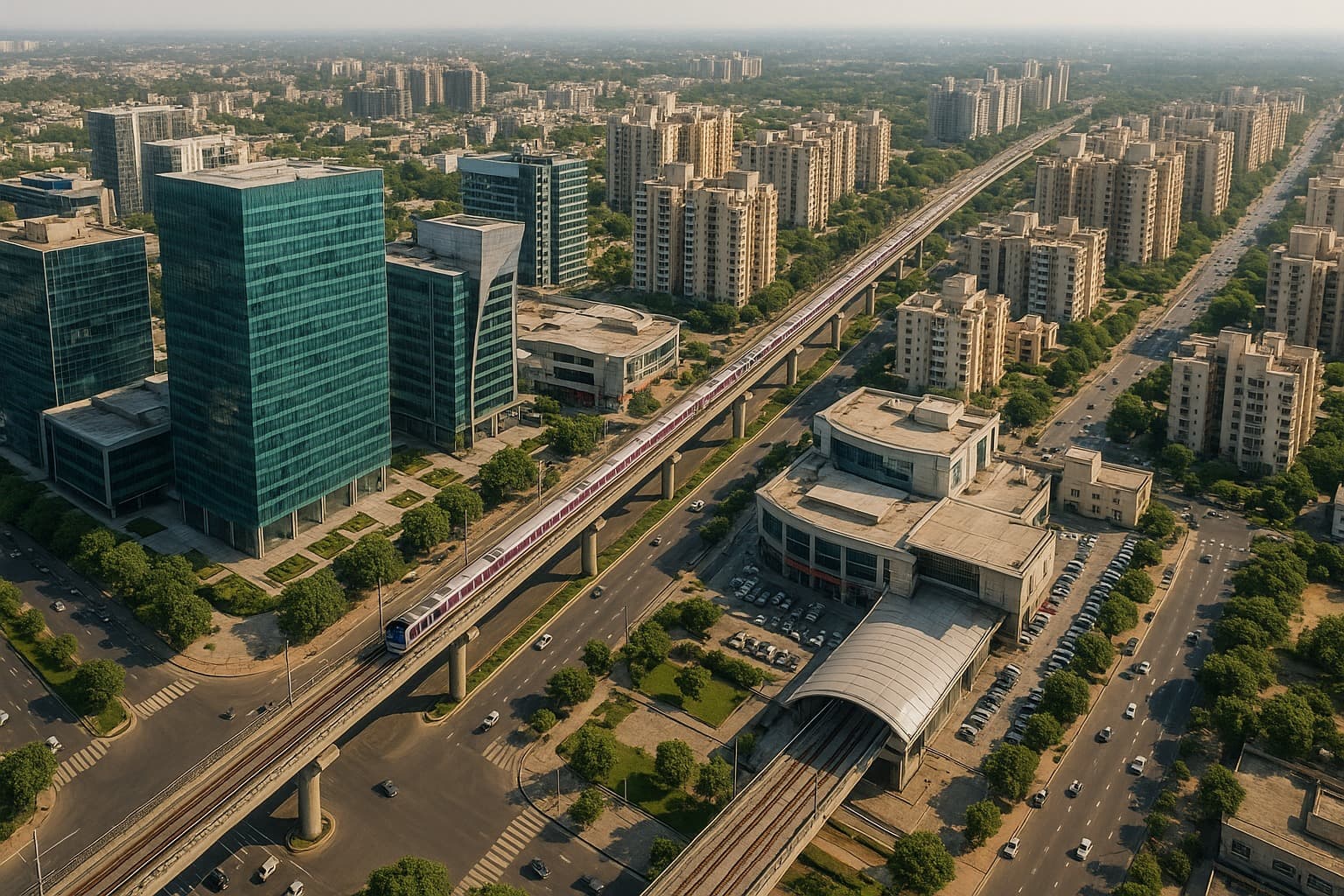Metro Rail Expansion and Its Impact on Real Estate Growth in India
Summary
Metro rail expansion significantly impacts Indian real estate, driving demand and price appreciation near stations. Upcoming projects offer investment opportunities, reshaping urban landscapes and benefiting both residential and commercial sectors.

Metro Rail Expansion and Real Estate Growth
India’s urban landscape is changing rapidly, and metro rail India projects are at the heart of this transformation. From Delhi and Mumbai to Bengaluru and Pune, the expansion of metro networks is not just revolutionizing metro cities housing but also reshaping the real estate sector. The growth of property near metro stations, rising demand in metro corridors, and evolving urban planning all point toward one conclusion: metro connectivity is a major driver of real estate growth in India today.
As cities expand and traffic congestion worsens, metro rail projects offer faster, safer, and more reliable transportation. Beyond easing daily commutes, these developments have a direct impact on metro projects real estate, influencing both residential and commercial property markets. For homebuyers and investors alike, understanding metro rail impact on property prices is critical for making informed decisions.
How Metro Rail Drives Real Estate Growth
The correlation between metro rail connectivity and housing demand is strong and well-documented. When a new metro line is announced, nearby areas often experience a surge in property interest. Improved accessibility makes these locations attractive for both homeowners and developers. As a result, real estate growth near metro stations becomes almost inevitable.
For instance, in Mumbai, upcoming metro lines connecting suburban areas to key business districts are creating high demand for property near metro corridors. Buyers are willing to pay a premium for homes that reduce commuting time, while developers are seizing the opportunity to launch new residential and commercial projects.

Impact on Property Prices
Metro rail impact on property prices is one of the most significant outcomes of urban metro expansion. Studies and market trends show that property prices near metro stations often appreciate faster than in non-metro areas. The reasons are simple: accessibility, convenience, and potential for future growth.
In cities like Bengaluru, Pune, and Hyderabad, new metro lines have caused noticeable increases in both rental and resale prices. Apartments, villas, and even plots close to upcoming stations are seeing higher demand, confirming that metro influence on Indian real estate is both tangible and long-lasting.
Upcoming Metro Expansion Projects in India
Looking ahead, metro expansion projects in India 2025 are set to further accelerate real estate growth. Cities including Chennai, Kolkata, Jaipur, and Lucknow are expanding their metro networks, while existing systems in Delhi, Mumbai, and Bengaluru are adding new corridors.
These projects are creating hotspots for real estate investment near metro corridors in 2025. Areas once considered peripheral are transforming into prime residential and commercial hubs. For investors, this trend highlights the importance of anticipating growth along metro routes to maximize returns.
Residential Demand Near Metro Corridors
The convenience of metro connectivity is redefining residential preferences. Homebuyers now prioritize access to metro stations almost as much as proximity to workplaces or schools. As a result, impact of metro projects on property demand in metro cities is evident in several emerging residential hubs.
For example, in Pune, areas along the Hinjewadi-Shivajinagar metro corridor are witnessing increased demand for apartments and gated communities. Buyers are looking for property near metro stations that allows them to enjoy both affordability and reduced commute times. Similarly, in Bengaluru, upcoming metro stations in suburban areas are seeing early signs of price appreciation and new project launches.
Commercial Real Estate Boost
Metro rail expansion isn’t just benefiting residential properties—it’s also driving real estate growth near metro stations in the commercial segment. Offices, retail spaces, and mixed-use developments are flourishing near metro corridors, as businesses recognize the advantage of easy accessibility for employees and clients.
In Delhi NCR, the development of metro lines connecting peripheral areas to business hubs has encouraged developers to launch commercial complexes along these routes. This reflects how metro rail connectivity and its effect on housing prices extends to commercial real estate as well, creating integrated urban growth.
Investor Insights

For investors, the message is clear: how metro rail expansion is boosting Indian real estate offers significant opportunities. Properties near metro stations not only promise higher appreciation but also greater liquidity. Areas that are currently underdeveloped but fall along upcoming metro routes are particularly attractive.
Understanding upcoming metro routes and property growth in India allows investors to make strategic decisions. Early investments in these corridors can yield substantial returns, especially in cities where metro connectivity is expected to increase sharply in 2025.
Long-Term Urban Transformation
Beyond immediate property price gains, metro expansion contributes to long-term urban transformation. Metro influence on Indian real estate drives planned development, better infrastructure, and more organized urban growth. Cities are reimagining residential zones, commercial hubs, and public spaces along metro corridors, creating a ripple effect that benefits both investors and residents.
As metro rail India projects expand, areas previously considered remote are becoming highly desirable. This trend is redefining city boundaries, redistributing population density, and fostering the emergence of new economic zones, ensuring that real estate growth near metro stations is sustainable.
Conclusion
Metro rail expansion is not just a transportation upgrade—it’s a catalyst for real estate growth across India. From increased demand for property near metro stations to the rising appeal of suburban areas, metro connectivity is reshaping the residential and commercial landscape. Cities witnessing metro rail impact on property prices are seeing rapid appreciation, while developers capitalize on metro projects real estate opportunities. With upcoming corridors planned under metro expansion projects in India 2025, the influence of metro rail on Indian real estate will continue to grow. For buyers and investors, aligning with metro developments is now a strategic imperative.
Summary (100 words)
Metro rail expansion is driving significant changes in Indian real estate, influencing both residential and commercial markets. Improved metro connectivity increases demand for property near metro stations, causing faster appreciation in metro cities housing. Upcoming lines and expansions in 2025 will create new hotspots, offering opportunities for real estate investment near metro corridors in 2025. Residential areas benefit from convenience and reduced commute times, while commercial zones flourish with better accessibility. Understanding how metro rail expansion is boosting Indian real estate allows investors and homebuyers to make strategic choices. Overall, metro projects are reshaping urban living and property growth across India.
